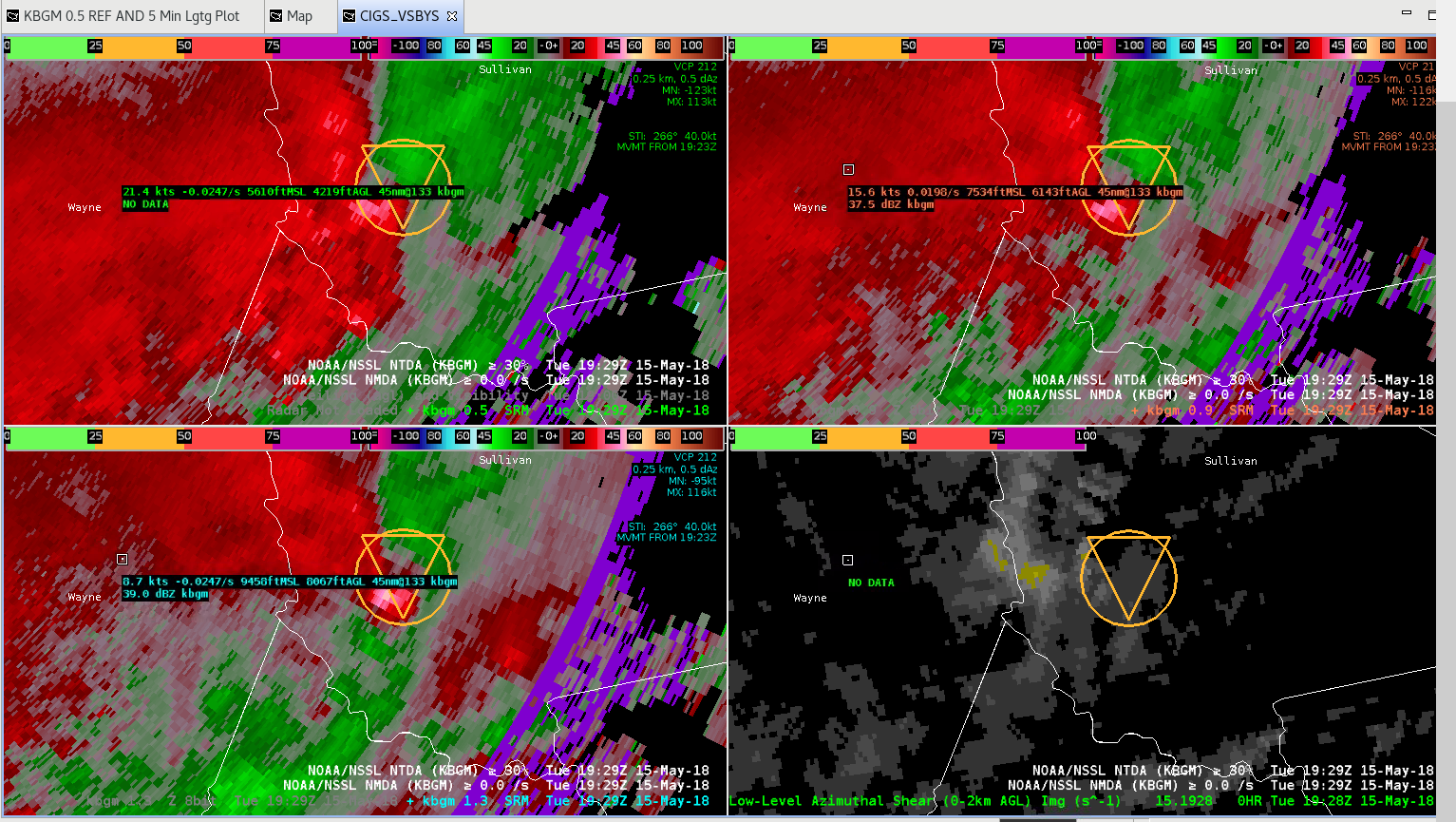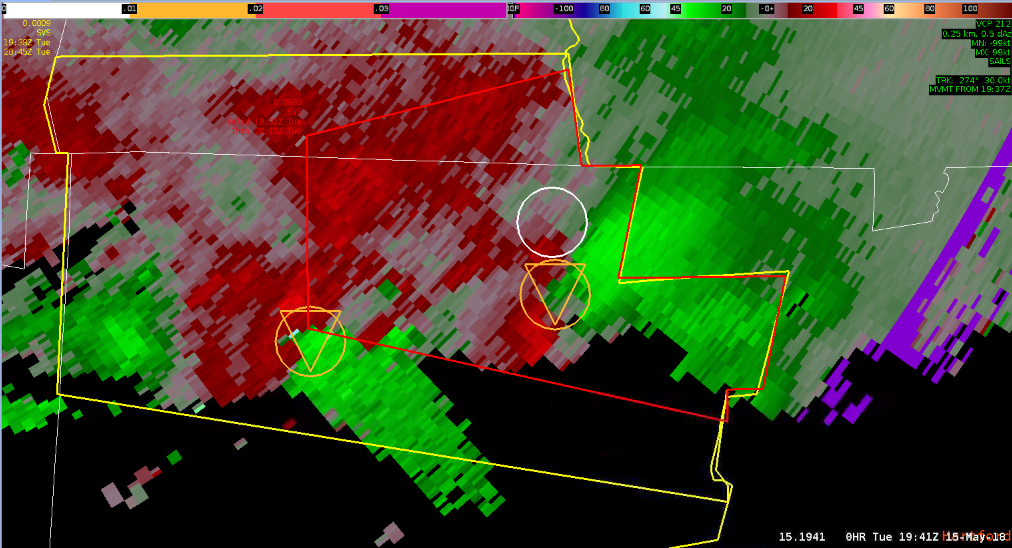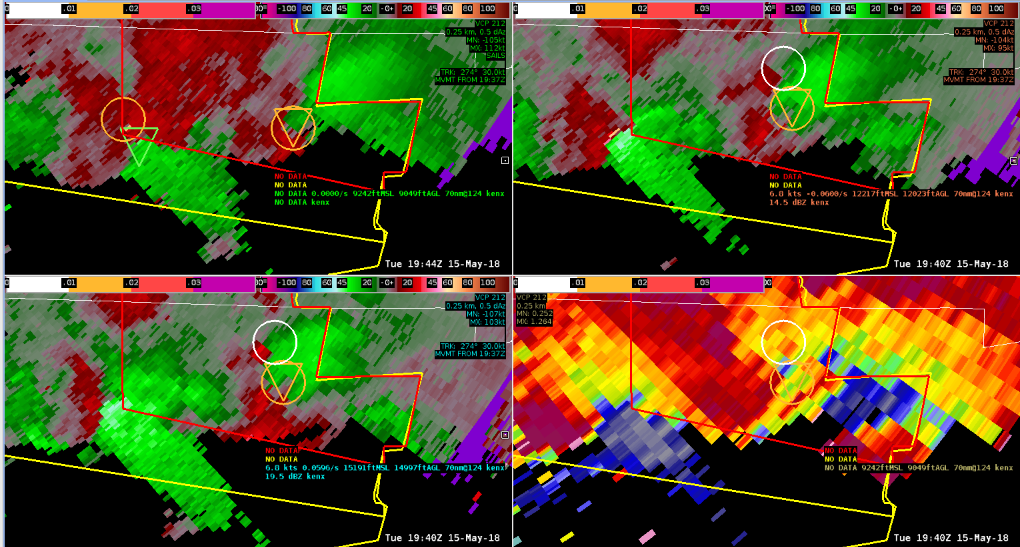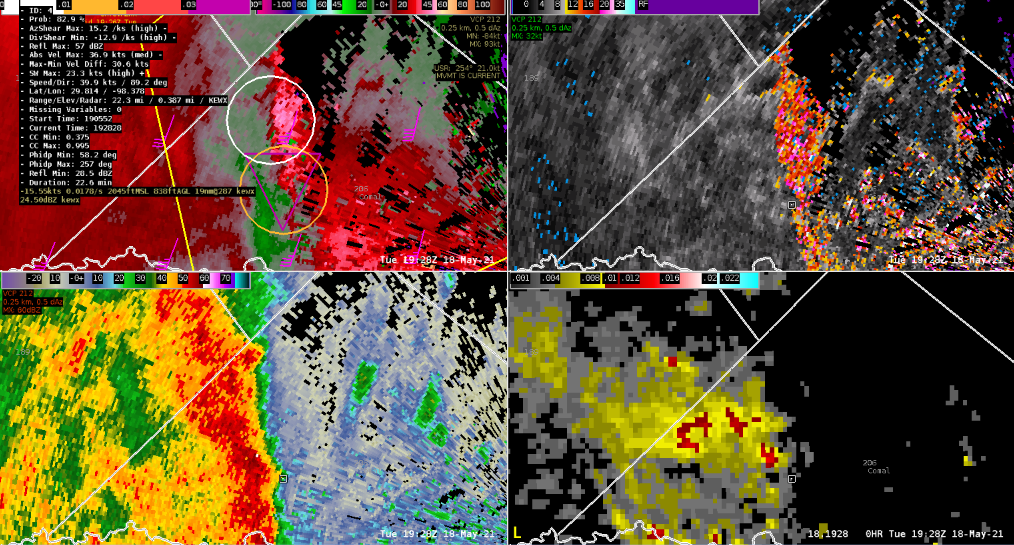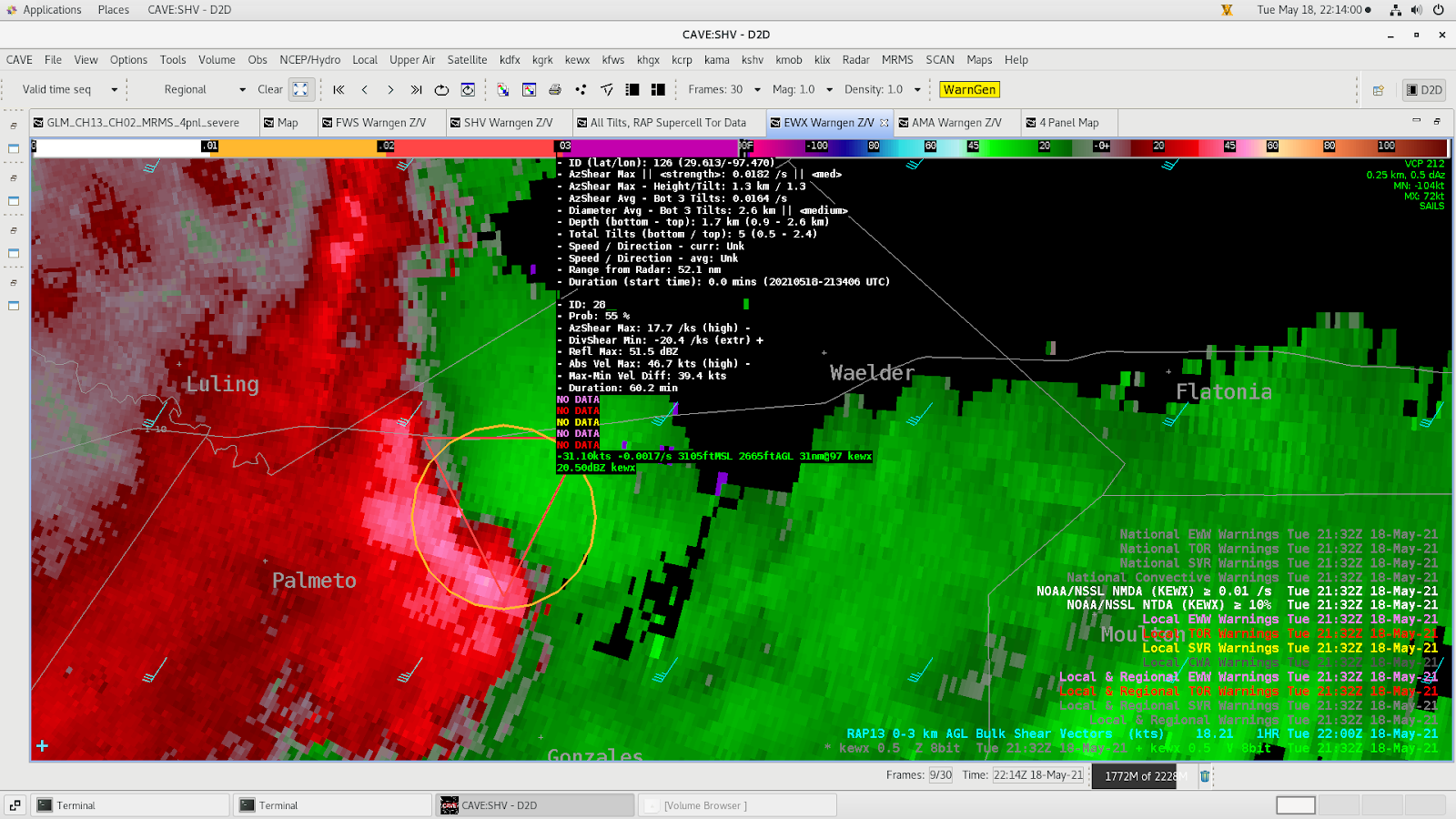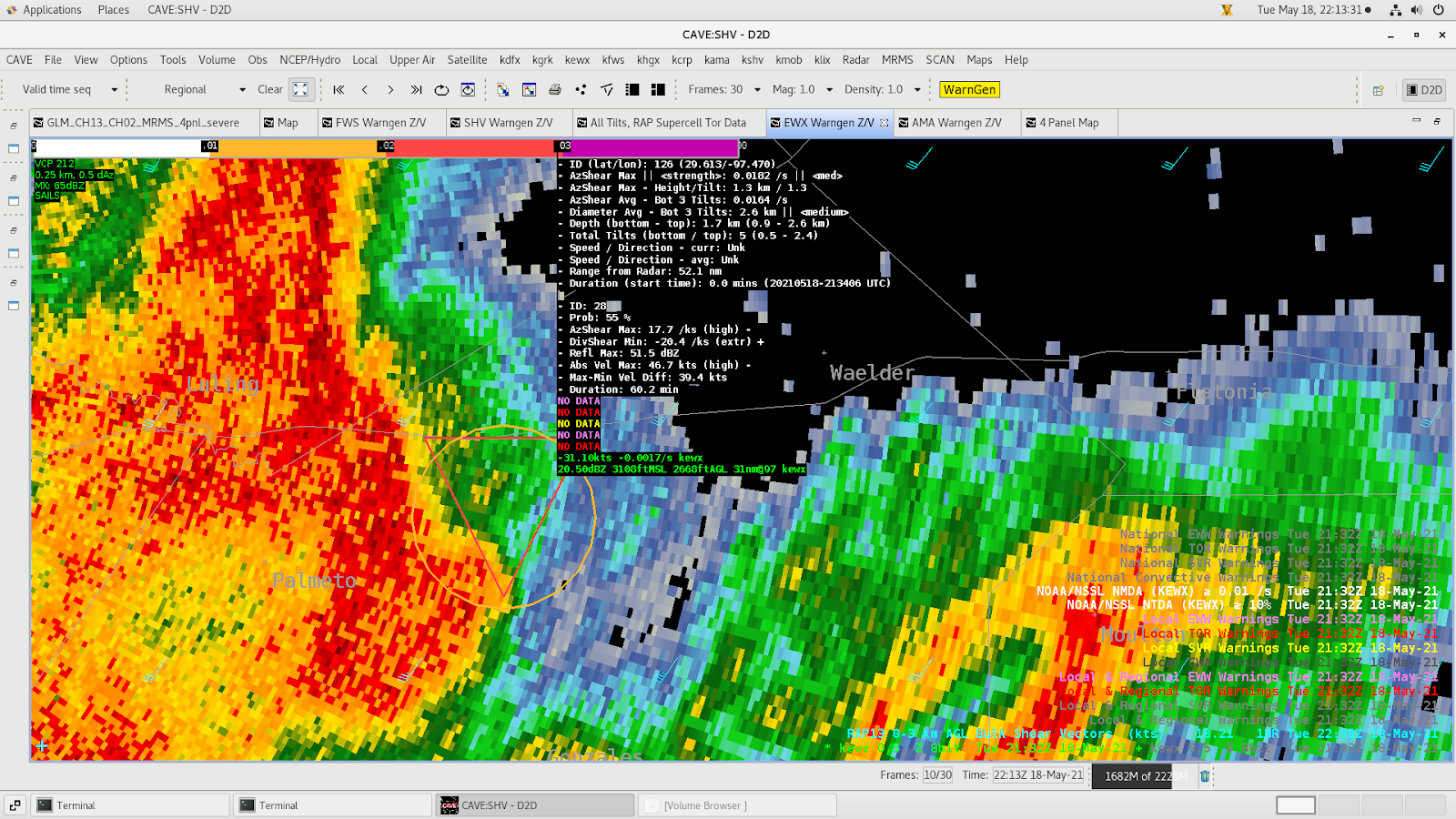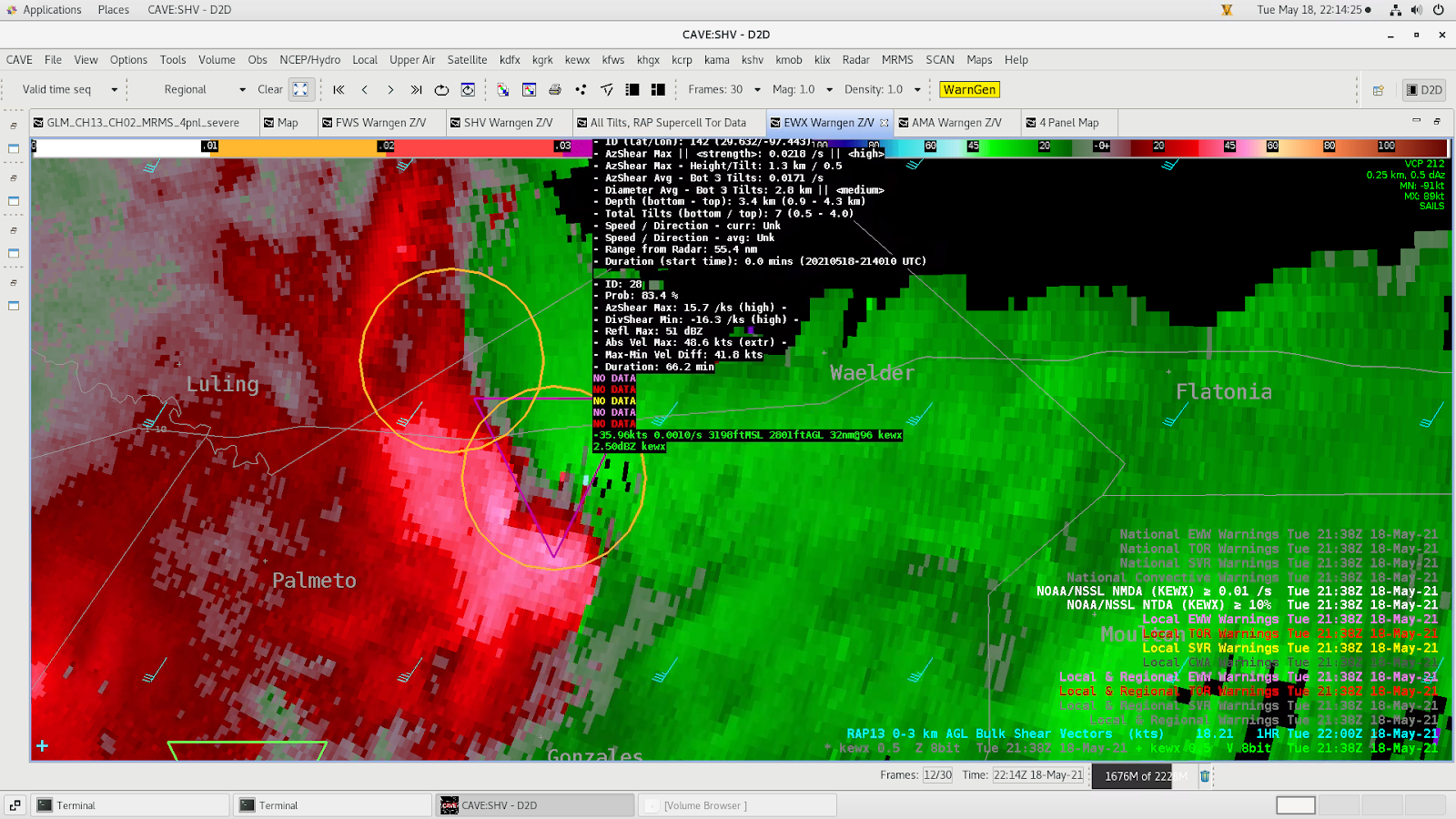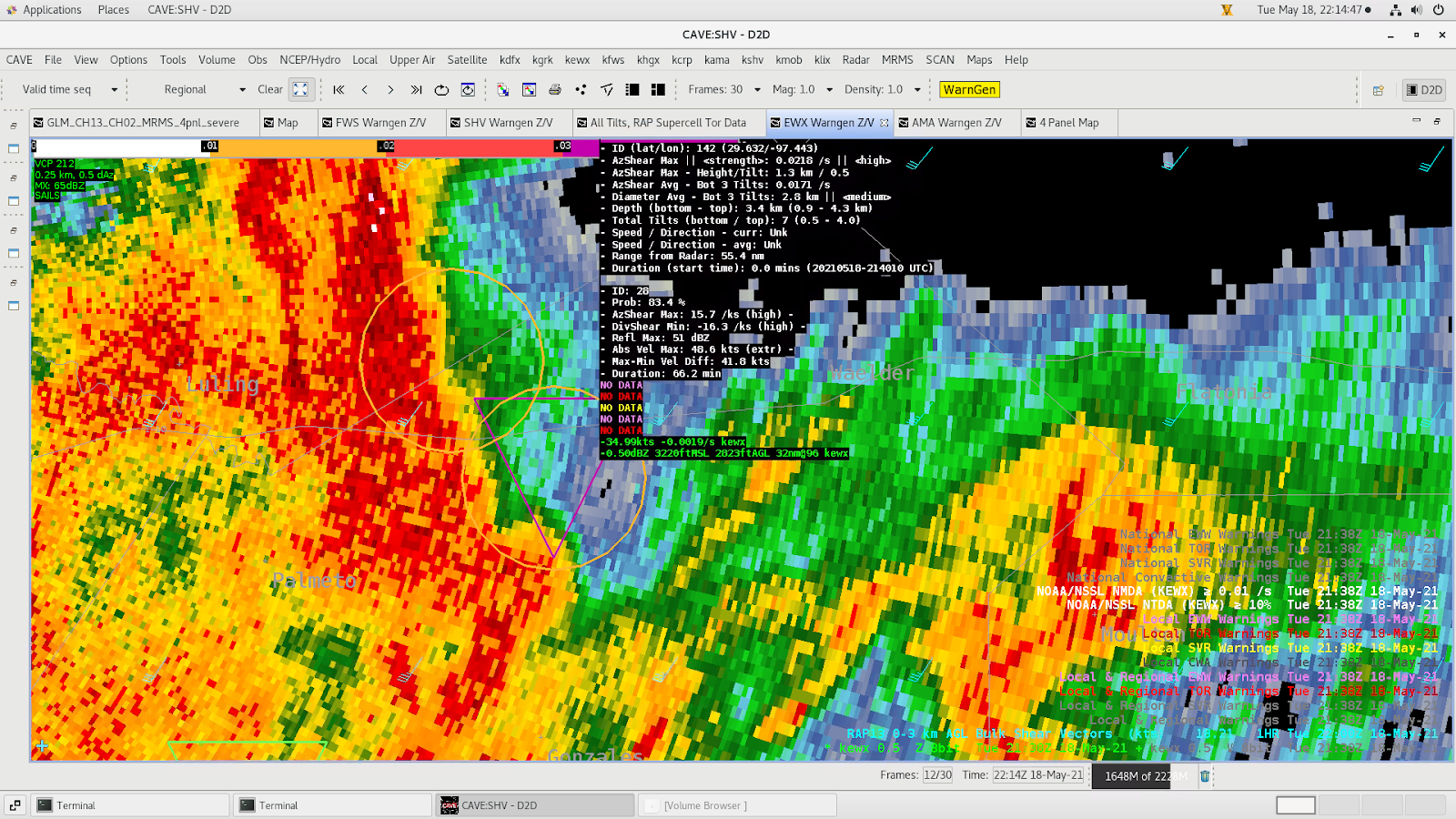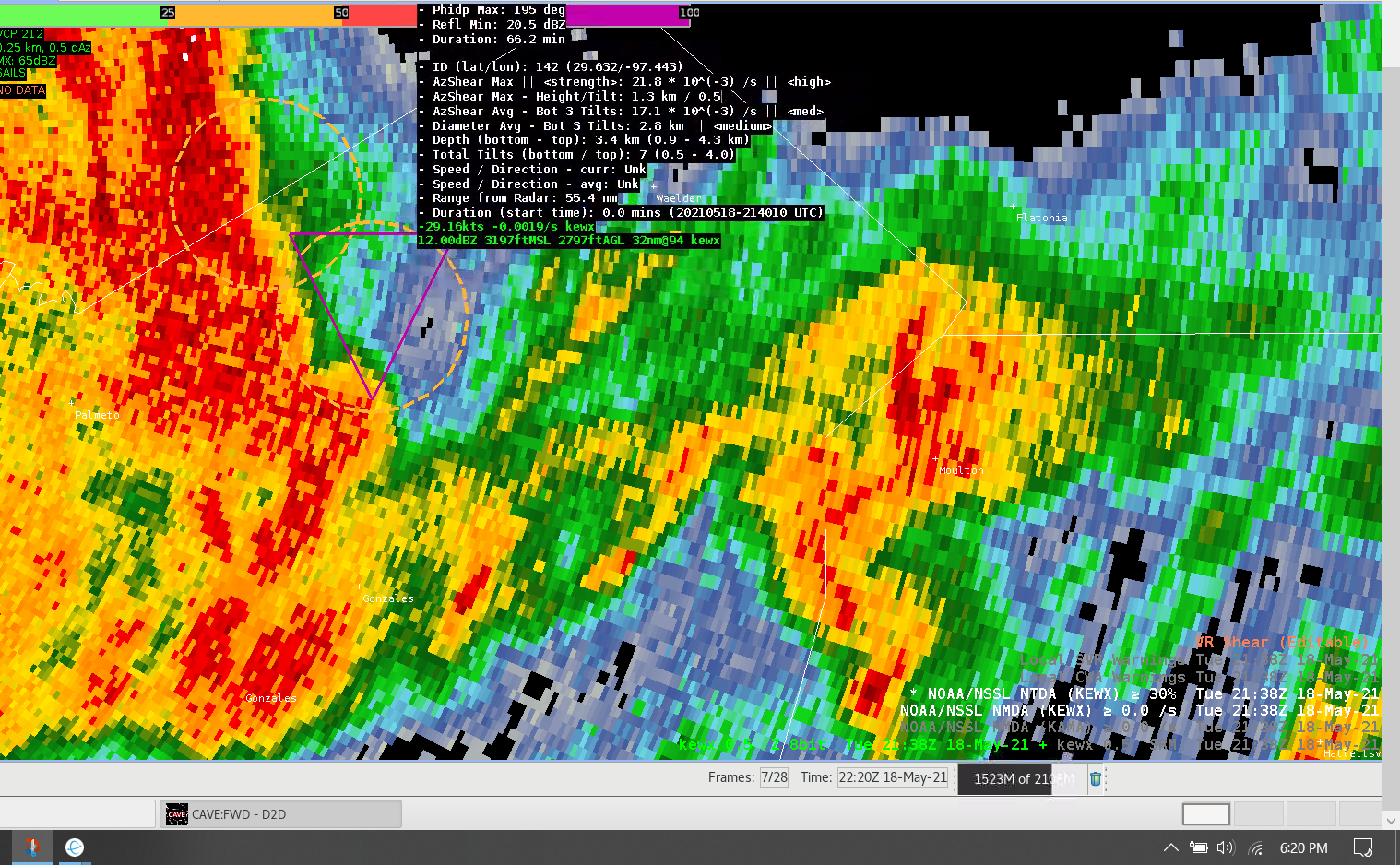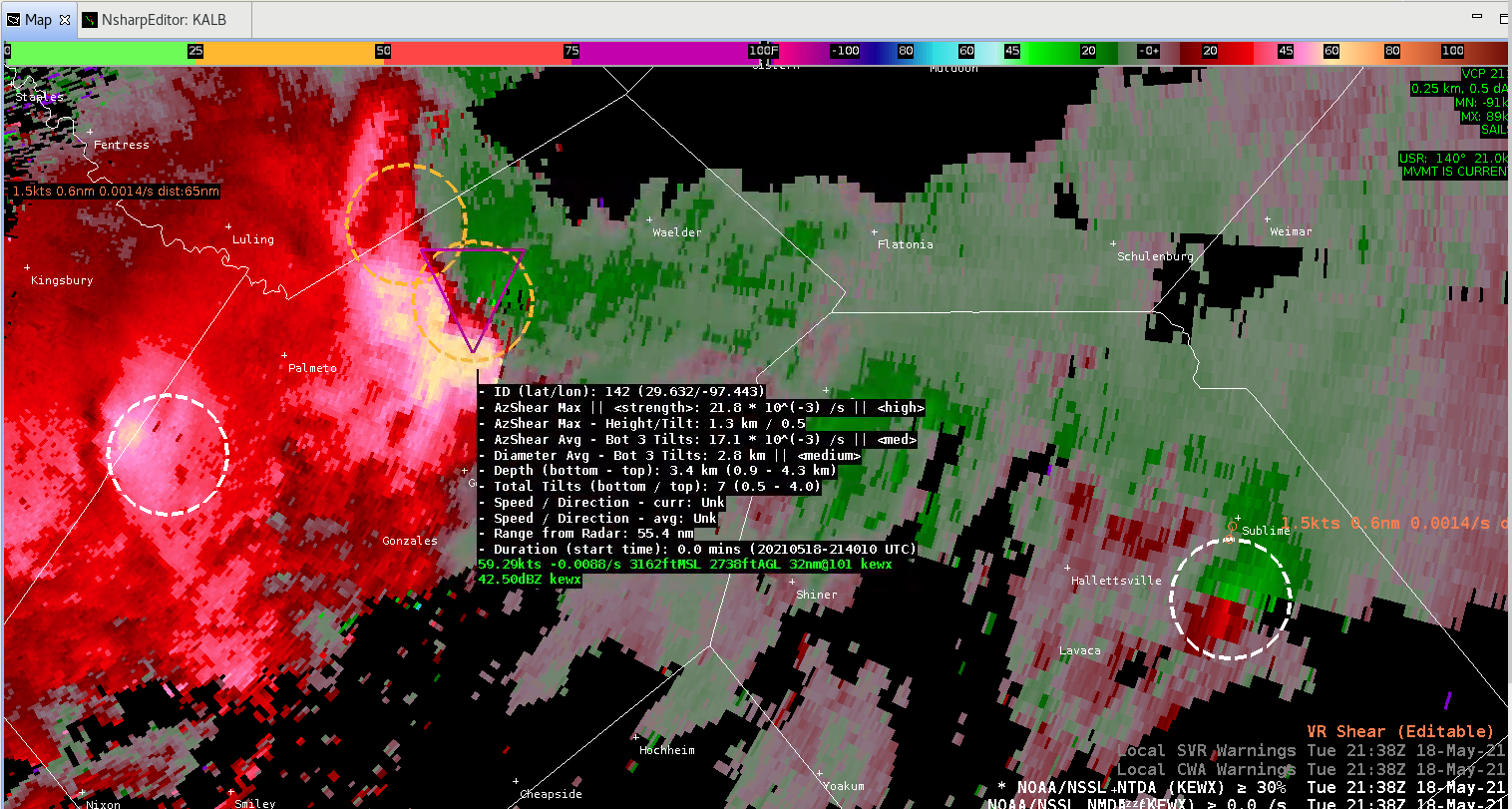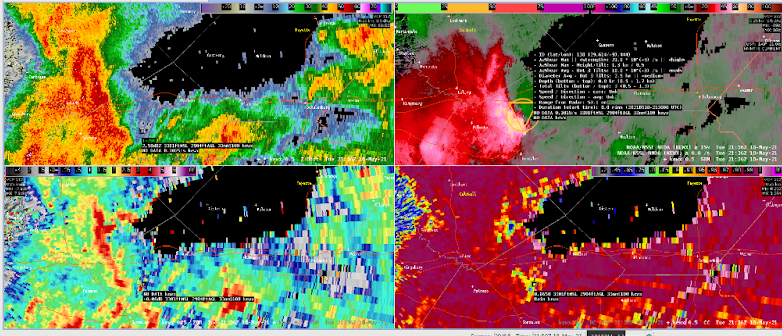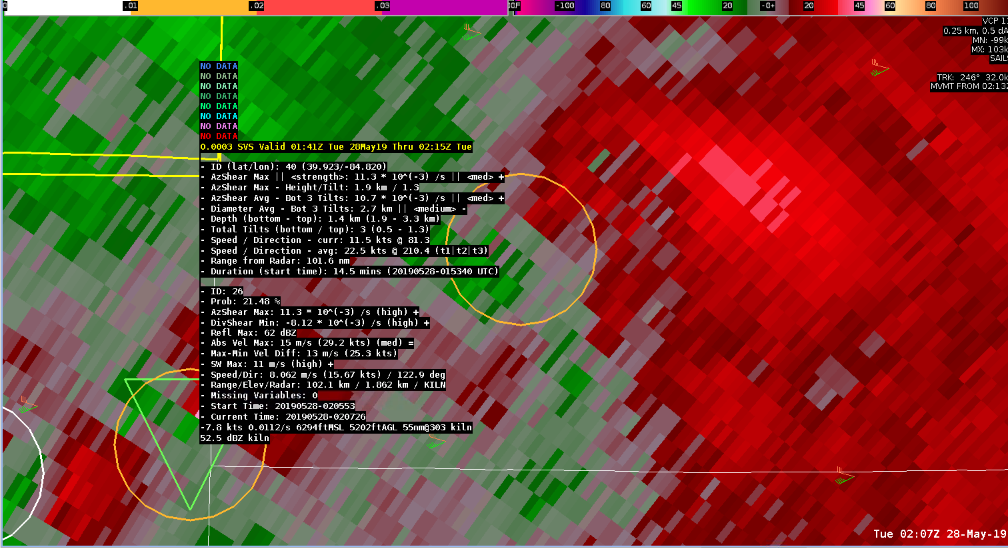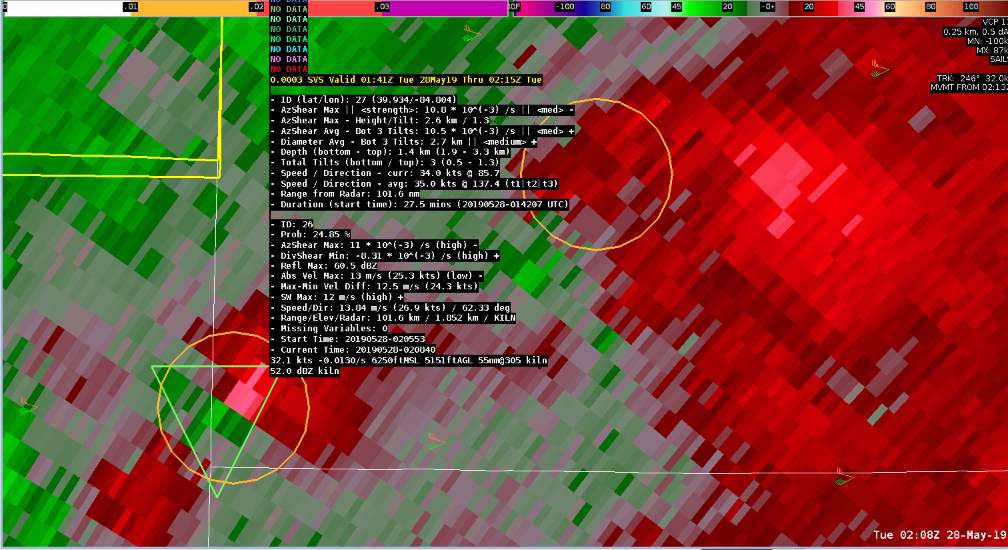A supercell tracked south of the ENX radar in the archive case. A particularly large hail core produced a TBSS to the south of the storm over the inflow region. This may have produced bad velocity data in the area of interest when examining the Meso/TDA detection. At 18:49Z, there was a high prob in the NTDA and the NMDA was colored in the 3 out of 4 range. But the values really jumped around within a few scans of that time. Possibly because of the TBSS signature. I found that the detection values were much more consistent with the supercell once it moved east and the TBSS was located away from the hook/inflow region. It was important to use nearby radars in this case to avoid the TBSS contamination.
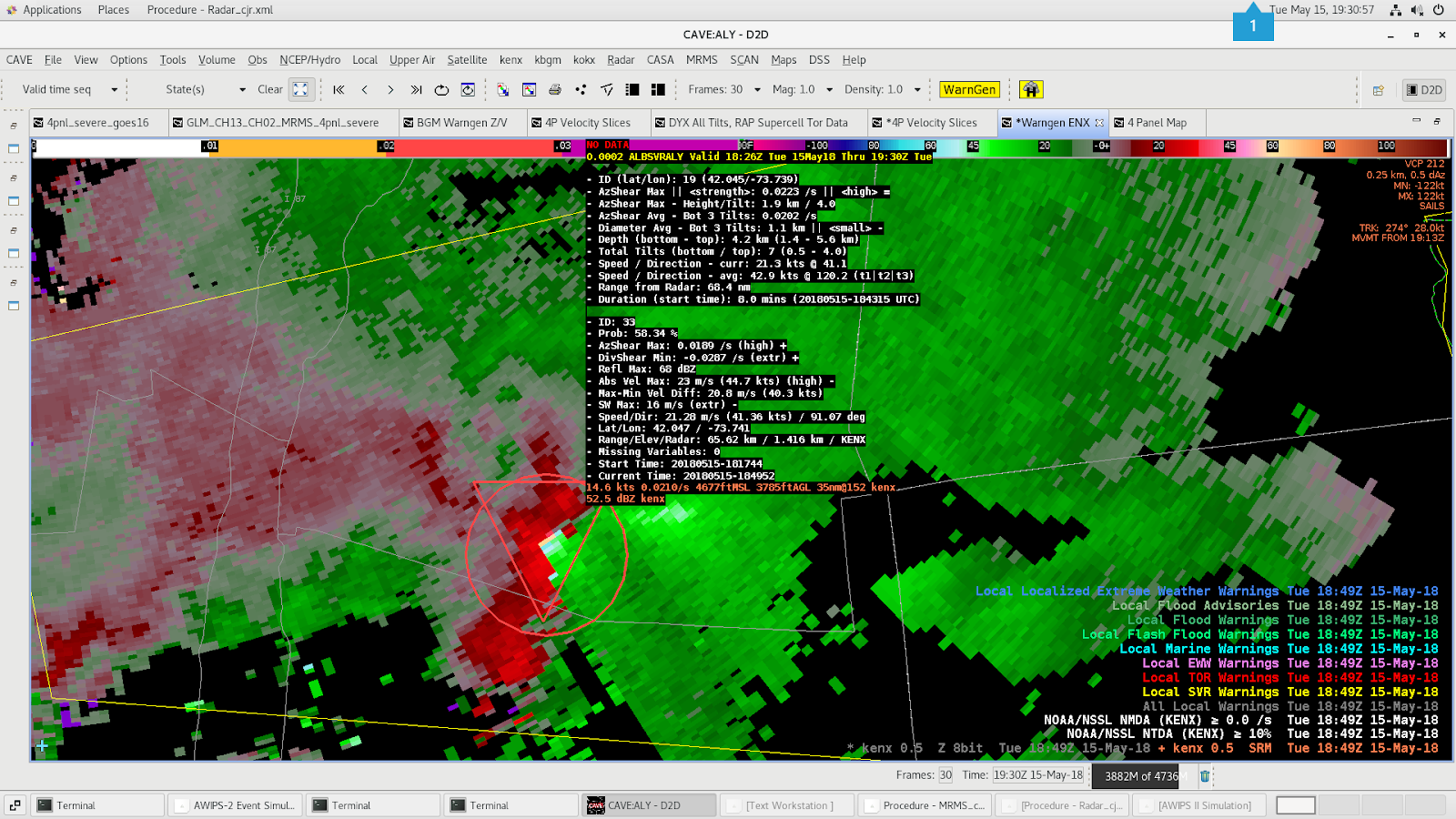
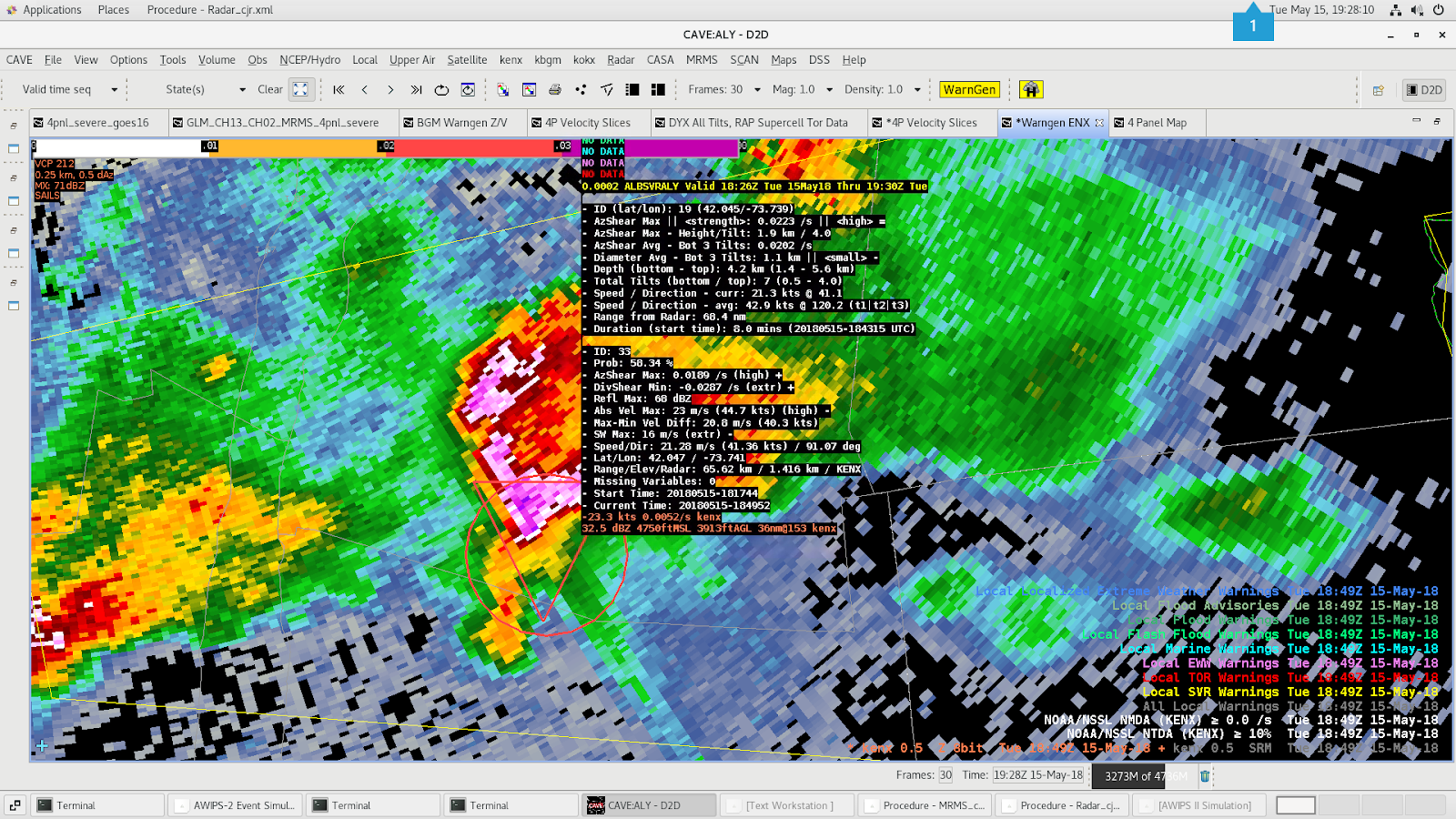

– Gerry Bertier



